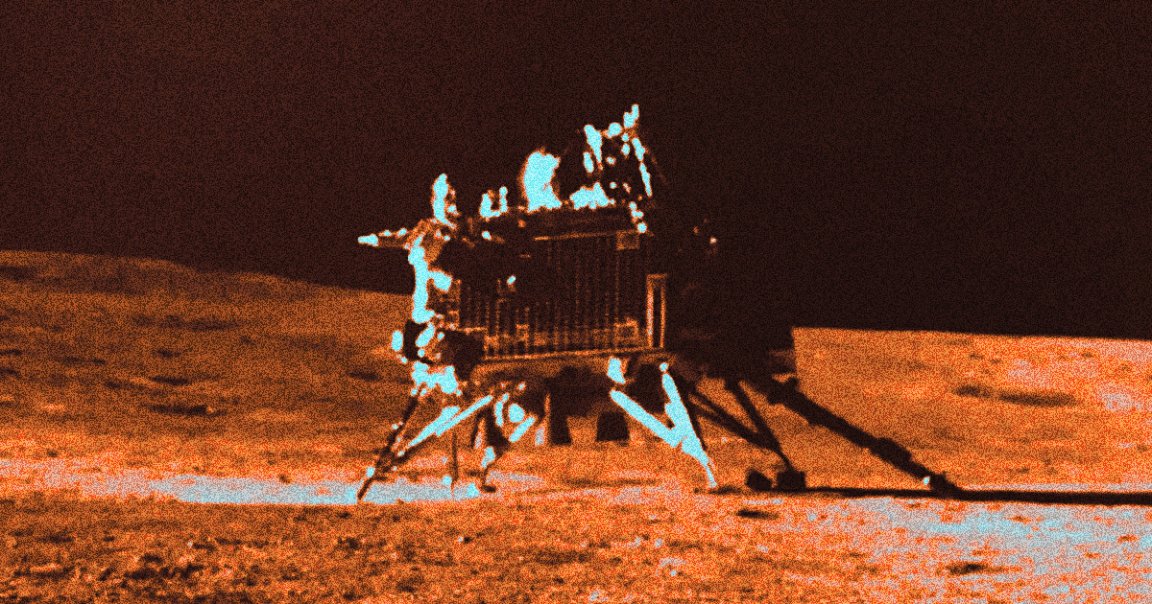
Nap Time
After its victorious first round of primary mission goals, India’s Chandrayaan-3 lunar rover and lander — the first spacecraft to successfully land on the Moon’s previously untouched South Pole, and India’s first Moon landing ever — are taking a well-earned nap.
As Space.com reports, both the Pragyaan rover and the Vikram lander are officially in “sleep mode” as they await the next lunar sunrise, due in roughly two weeks. The vehicles are both solar powered, and though the Indian Space Research Organisation (ISRO) said in a Saturday X-formerly-Twitter post that Pragyaan’s batteries are “fully charged,” the exploration body has chosen to safely power down and park the rover — which, per Space.com, has already roamed over 330 feet of the lunar surface since its August 23 arrival — for the time being.
“The solar panel is oriented to receive the light at the next sunrise expected on September 22, 2023,” the ISRO wrote in the Sept 2 update, noting that the rover’s “receiver is kept on.”
“Hoping for a successful awakening for another set of assignments!” the post continued. “Else, [Pragyaan] will forever stay there as India’s lunar ambassador.”
Got Hops
Vikram followed suit two days later, with the ISRO announcing in a September 4 X post that the lander “will fall asleep next to Pragyan once the solar power is depleted and the battery is drained.” And though its operations continued for a few days longer than Pragyaan’s, the lander is due to rise on that same September 22 date.
Indeed, as Space.com reports, the ISRO did its best to get Vikram as close to Pragyaan for their joint naptime as possible, powering up the lander’s thrusters to perform a small, 16-inch “hop” over to the nearby snoozing rover.
The Chandrayaan-3 mission is a historic moment in space travel. The potential for discovery on this previously unexplored lunar landscape is vast, while the vehicles’ safe landing has also put India into an elite group of just four countries to put a spacecraft on the Moon, a list that also includes the US, the former USSR, and China.
On that note, it’s worth mentioning that the ISRO’s success has also been a salient foil to the recent failure of Roscosmos, whose own attempt to land its Luna-25 craft on the Moon’s south pole ended in catastrophe just two days prior to the history-making Chandrayaan-3 landing.
Here’s looking forward to September 22, when the ISRO’s vehicles are set to resume their journey — and hopefully, make some fascinating findings along the way.
More on Pragyaan and Vikram: India Prevents Moon Rover from Falling into Hole